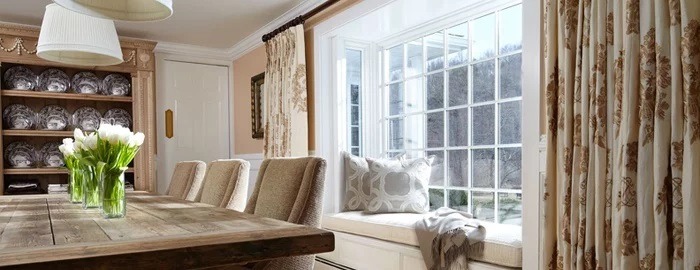MENU



When shopping for new windows for your Michigan home, one of the terms you’re likely to come across is “thermal efficiency.” When used in reference to windows, this term refers to the ability of windows to resist heat transfer. In other words, a very thermally efficient window does not allow a lot of heat to pass through it.
To help guide you in your search for replacement windows, here are five more important facts about thermal efficiency to keep in mind.
You will often see a U-factor listed for various windows, especially if those windows are claimed to be thermally efficient. The U-factor is a number that measures the rate of heat transfer through a surface — in this case, a window. It usually ranges from 0.25 to 1.25, and the lower the U-factor, the more thermally efficient a window is. Generally, a U-factor of 0.35 or less is said to be thermally efficient enough for most homes.
Heat can also be lost through the sash and frame materials that surround the glass portion of the window. If you want the most thermally efficient windows, a wood composite material like Fibrex® is a good choice. Since it expands and contracts at the same rate as the glass, it stays closely sealed to the window and does not create breaks through which warm air can flow.
Heat can be transferred through glass in several ways. One of these ways is through radiation, which involves heat waves moving through the glass itself. A special kind of coating called a Low-E coating reduces this type of heat transfer, making windows more thermally efficient. Andersen’s SmartSun™ glass is a good example of Low-E glass. In the cold Michigan winters, it keeps your home from losing so much heat through the windows. In the warm summers, it keeps heat waves from moving from the outside, in.
Up until about 20 or 30 years ago, the windows put on homes lacked a lot of the modern features that make today’s windows so thermally efficient. They were often made with single panes of glass rather than two panes. And the frame materials, which often included wood and aluminum, allowed a lot of warm air to pass through. So if you have older windows on your Michigan home, replacing them is often the best way to reduce heat transfer and get your energy bills under control.
Double-hung windows have become quite popular, thanks to the ease with which homeowners can open and close them. While today’s high-quality double hung windows certainly do a better job of blocking heat transfer than the hung windows of yesteryear, casement windows are actually a more efficient option. This is the style of window that is mounted on a side hinge and closes with a small crank. Casement windows fit more tightly into the frame, so less warm air is lost through them.
If you need help selecting the most thermally efficient windows for your Michigan home, please contact Renewal by Andersen. We offer free, in-home consultations, and our knowledgeable technicians will help you choose the best style, glass, and frame materials to minimize heat loss.